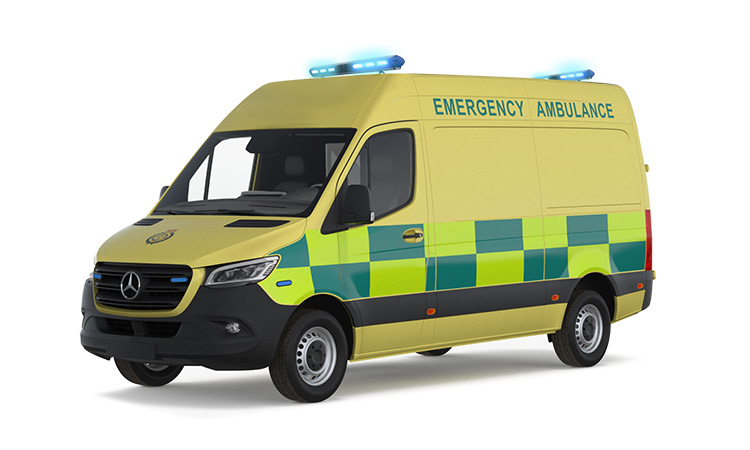If you’re new to Fire/EMS or just looking to get a better understanding of the options offered by various ambulances manufacturers, one question you might have is “What’s the difference between a Type 1 and Type 3 ambulance?” Unlike many ambulance manufacturers that lead by type, we lead by model at Enak. So, there’s no quick way to look and see what is a Type 1 ambulance versus a Type 3 ambulance. The good news is, that allows for more flexibility as a customer. For example, you’re able to get our Mercedes Sprinter models in either a Type 1 or Type 3 configuration. The distinction is made by the chassis you choose to build the ambulance on, which is often just as or more important to departments than what a model is called.
TAKE A CLOSER LOOK
Type 1 and Type 3 ambulances look similar upon first glance: they both feature a square patient compartment or ambulance module built separate from the chassis. When the box is completed, it’s mounted to the chassis to finish the build. The main difference between a Type 1 ambulance and a Type 3 ambulance is how the chassis used and how the box connects to the cab.
WHAT IS A TYPE 1 AMBULANCE?
Type 1 ambulances are mounted on a truck-style chassis. The driver compartment resembles a pickup truck. At Enak, Type 1 ambulances are available on Mercedes, Ford, Volkswagen chassis. Type 1 ambulances include a passthrough that is smaller than that of Type 3 ambulances; it looks like a window that connects the driver and patient compartments.
WHAT IS A TYPE 3 AMBULANCE?
Type 3 ambulances are mounted on a cut-a-way van chassis. Enak Type 3 ambulance chassis include panelvans and box chassis. On Type 3 ambulances, the cab is an integral part of the ambulance unit. The passthrough can vary in appearance, but looks more like a doorway than a window. This allows for easier transfer of items from the patient compartment to the driver compartment and vice-versa.
WHAT DO ALL ENAK AMBULANCES HAVE IN COMMON?
Although our Type 1 and Type 3 ambulances are different, they’re both built with one common goal in mind: to keep the occupants, whether patient or paramedic, safe at all costs. With no separate extruded frame, it reduces weight and adds strength, helping to absorb impact, minimize transferred damage, and provide added safety. For more information on specific models, please visit our products page!

